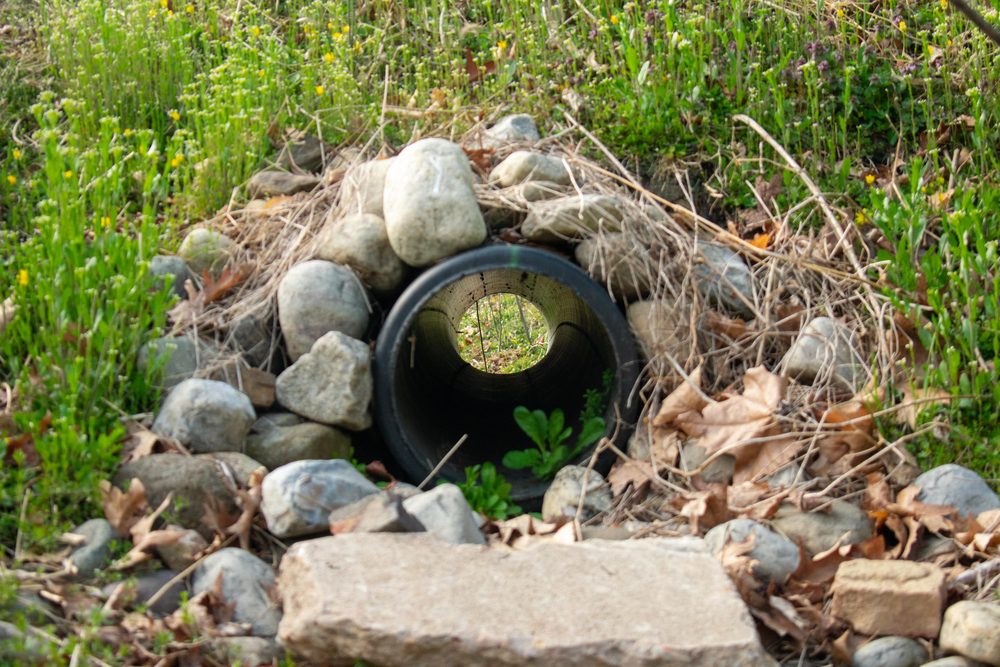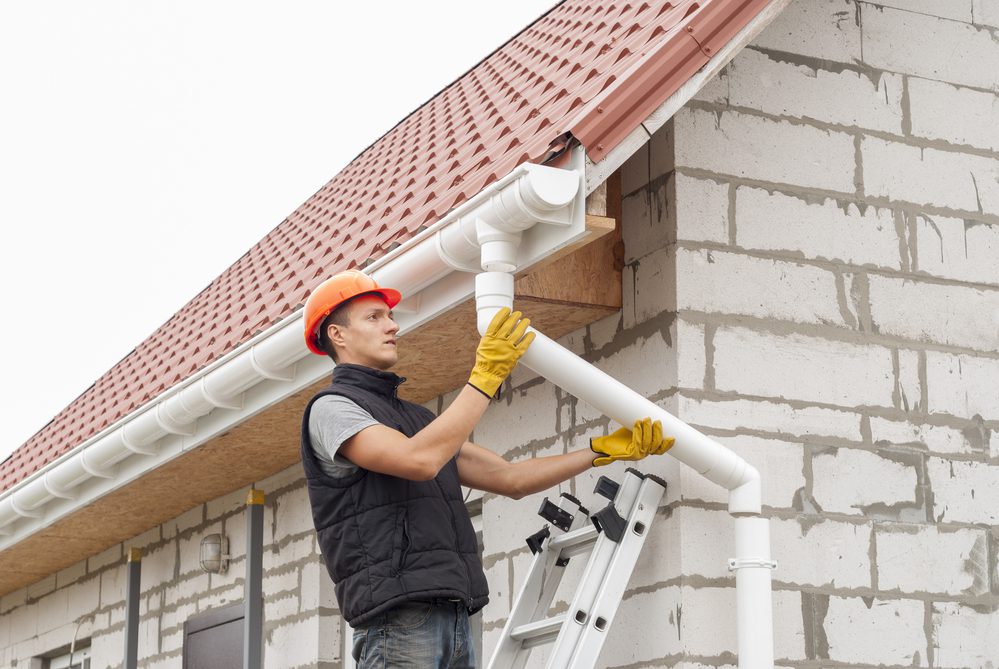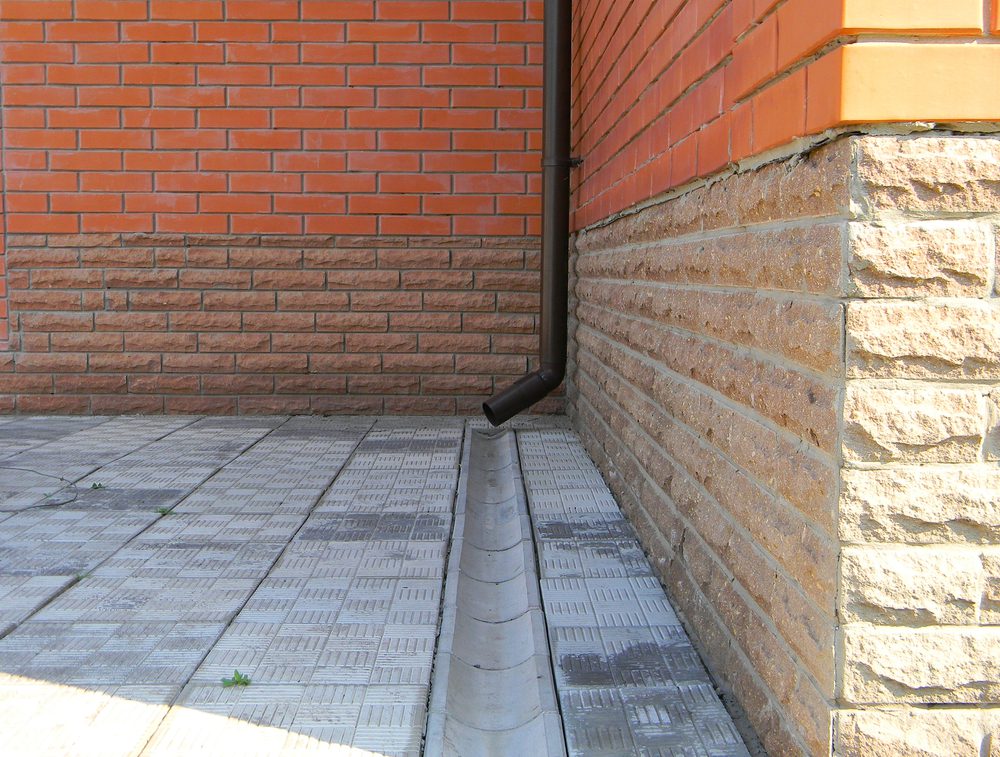Drainage Around a Foundation Is Important
Drainage around a foundation is important. So important in fact, that poor drainage around your home’s foundation can even threaten its structural integrity. If runoff from rain and snow isn’t channeled far enough away from your home, it could saturate the soil and destabilize the foundation.
It’s both easier and cheaper to install a good drainage system that it is to fix a damaged foundation. A good drainage system will necessarily include enough drains of the right size, as well as regular maintenance checks.
Common Foundation Drainage Mistakes
Common foundation drainage mistakes include…
Installing a drain too close to your foundation:
Water needs to drain at least 6 feet away from your foundation. If rain or snow runoff is dumped near your home, it will saturate the soil and eventually destabilize the foundation.
Not taking into account buried utility lines:
Before you start digging your drainage system you’ll need to locate and mark all buried utility lines (water, electricity, gas). If you don’t, you could hit one and cause a lot of trouble for yourself in the form of fines and repair costs. Of course, we don’t need to tell you that hitting a utility line could also be dangerous.
If you’re in the US, you can find the location of your buried utility lines by calling Call811. This is a free service offered nationwide. They’ll come out and mark your buried utility lines with either flags or paint.
Not ensuring that drainage pipes slope downhill:
If any section of the pipe doesn’t slope downhill, or if it includes sharp turns, water won’t be able to easily flow away from your home.
Not using smooth, PVC pipe with holes in it:
Some types of drainage pipes are corrugated with slits in them. However, this type of pipe can clog easily, and the clogs are difficult to break up because snaking a corrugated pipe isn’t easy.
Not making sure the holes in the drainage pipe face downwards:
Your goal is to channel water away from the foundation and keep the water level as low as possible while this is happening.
Using base stone as drainage rock instead of clear stone in your French drain:
French drains are long, relatively shallow ditches that contain a perforated pipe with drainage rock on top of it. The purpose of a French drain is to carry water away from a problem spot – not necessarily near a foundation – and dump it somewhere else.
There are two types of drainage rock, base stone, and clear stone. The base stone hasn’t been washed and still contains tiny bits of stone dust. These particles can get into the pipe’s holes and create clogs. Clear stone has been washed and no longer contains these tiny particles. Always use clear stone in your French drain.
Signs You Might Have a Foundation Drainage Problem
All homeowners should know how to spot the signs of a foundation drainage problem. You want to fix drainage problems early, before they have a chance to cause serious foundation damage.
- Overflowing gutters. If you see a lot of water gushing out over the edge of your gutters, your downspout might be clogged with dead leaves and other types of debris. When this happens, you might see mud splattered on the side of the house near the downspout, or even peeling paint. Simply cleaning the gutters and downspout of debris might fix the problem. If it doesn’t, you might need to replace the gutter because either it’s pitch is incorrect, or it’s too small.
- You have a lot of water around your foundation. If your downspouts are dumping water too close to your home, your soil could get saturated and this could then lead to the destabilization of your foundation. This can happen when heavily saturated soil puts pressure on foundation walls causing them to crack. Therefore, make sure all gutters drain at least 6 feet away from your foundation.
- Cracks in your foundation. Foundation cracks can be caused by a variety of reasons, including problems with drainage. If you notice any cracks, measure them (width and length), photograph them, keep an eye on them, and don’t hesitate to contact a foundation repair professional or a structural engineer for an inspection.
- There’s white, powdery stuff on your basement walls. This is called efflorescence, a fancy word for the salt deposits left behind by water. If you see it on your basement walls, you have a problem with excess moisture. Given that, you could have a foundation drainage problem.
- Concrete walls, either inside or outside, are flaking. This is called spalling. It happens when water gets inside the concrete (or brick or stone) and then pushes it outward. This excess moisture might be due to flooding or some other reason. If left unchecked, spalling can affect the building’s structural integrity.
- There’s mold or mildew in your attic. If you notice a problem with mold or mildew in your attic, you might have excess moisture rising up through your house from the crawl space or the basement. In that case, your next step should be finding out why there’s excess moisture in your basement or crawl space. Who knows. You might have a foundation drainage problem.
Read more about – How water seepage can affect your home’s foundation?
Your home’s foundation is – without a doubt – its most important feature. In fact, it’s no exaggeration to say that your home’s structural integrity rests on the soundness of its foundation. While drainage problems around your foundation might sound like nothing more than a minor issue, nothing could be further from the truth. Drainage problems can – if left unchecked – result in major structural damage.
Therefore, it’s worth taking the time to make sure your home’s drainage system is working properly and channeling water away from your foundation. If you suspect there might be a problem with the drainage around your home’s foundation, contact a foundation repair professional, or a structural engineer, for an inspection.




